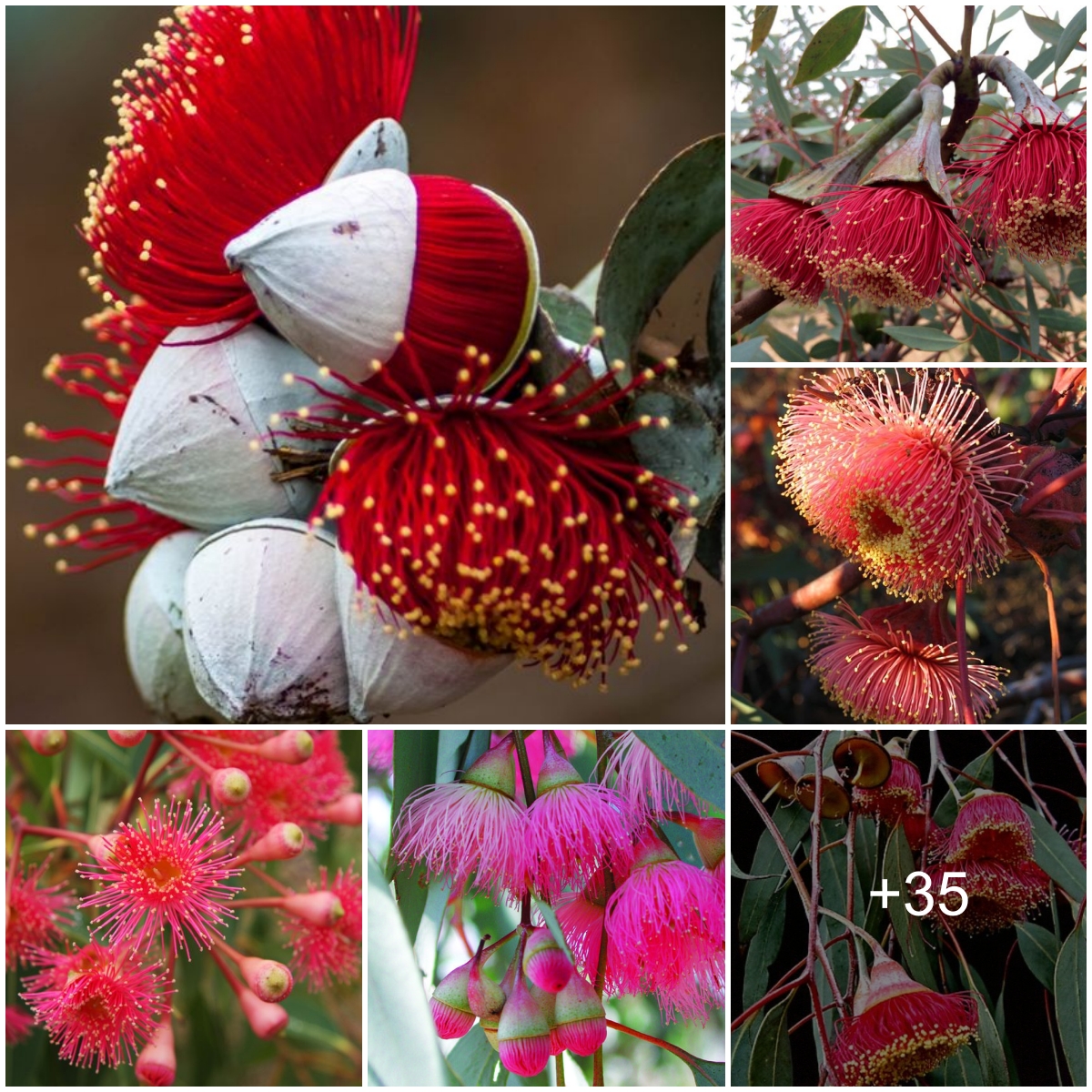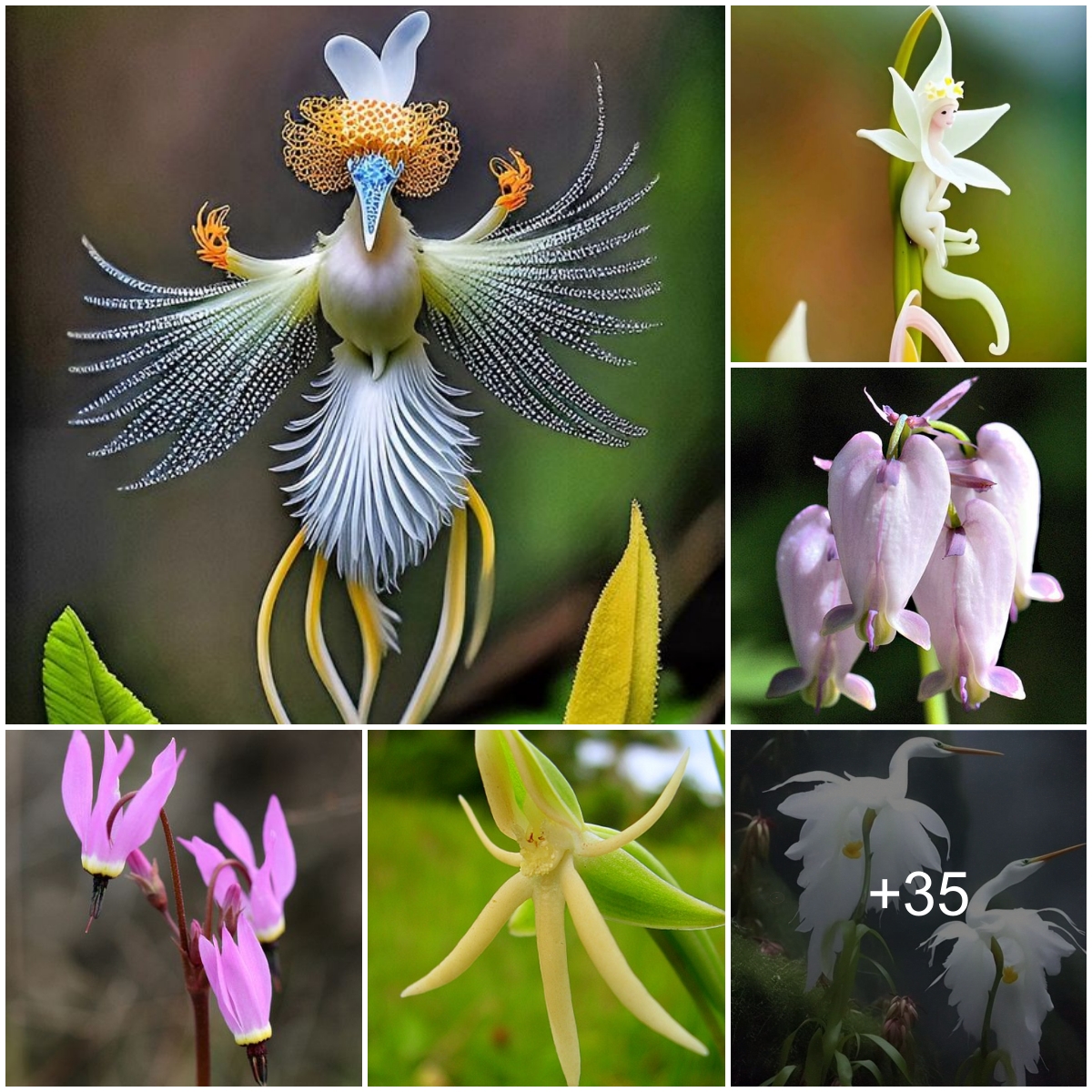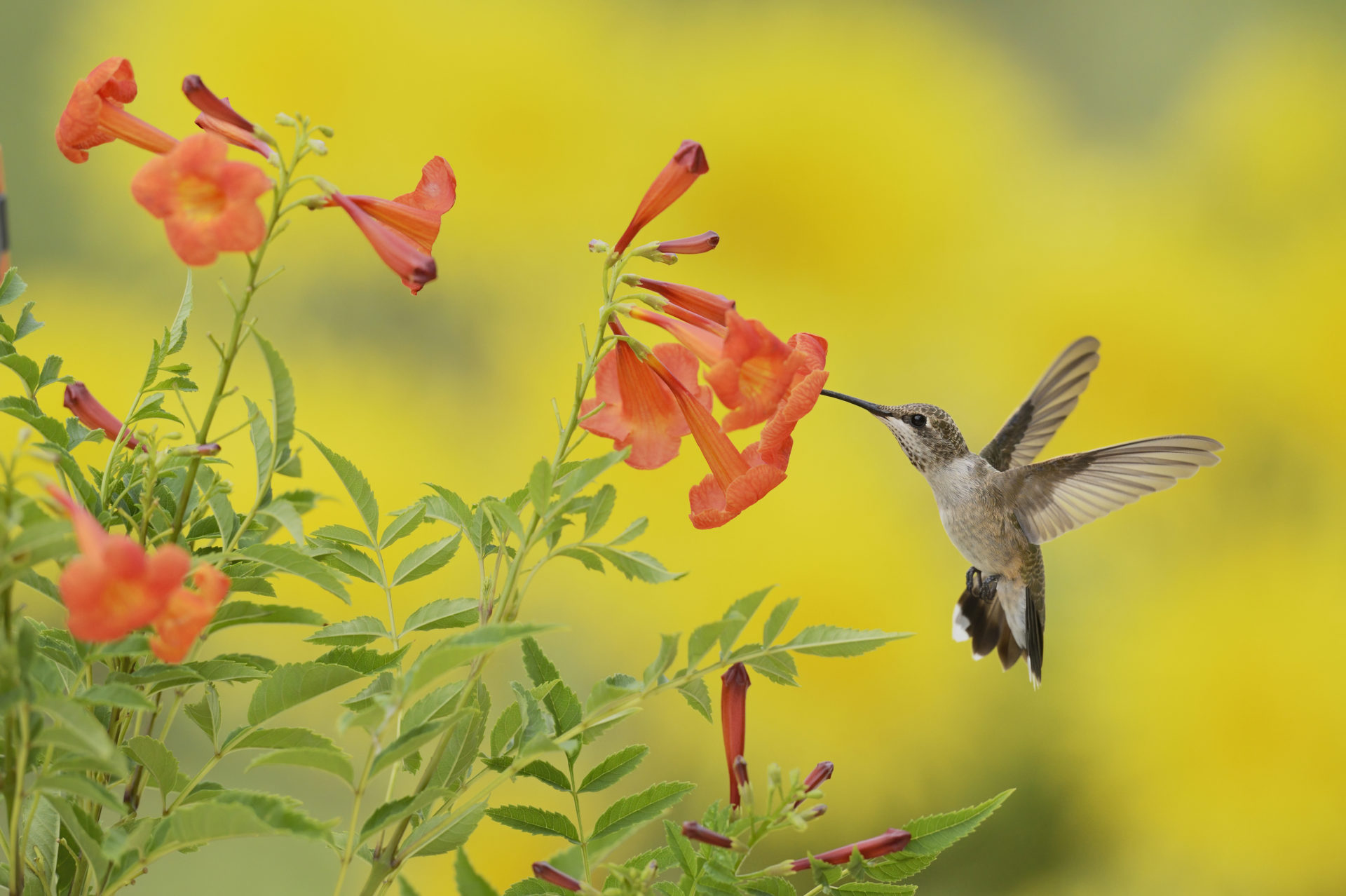
The antics of these petite, jewel-colored hummingbirds in the garden are endlessly fun to watch. They are the only birds capable of sustained hovering and can even fly backward and upside down. Hummingbirds are surprisingly fast and also territorial, often engaging in high-speed chases around the garden.
The Ruby-throated hummingbird is the only species that nests east of the Mississippi, but 17 species live in the U.S., many near the Mexican border. These migratory birds will follow their favorite blooms as the seasons change, stopping wherever they can refuel. Give them a garden loaded with these tasty nectar-producing flowers, and you’re sure to lure entertaining hummingbirds.
Read on for 17 flowers to plant in your garden to attract these fascinating birds.
Salvia
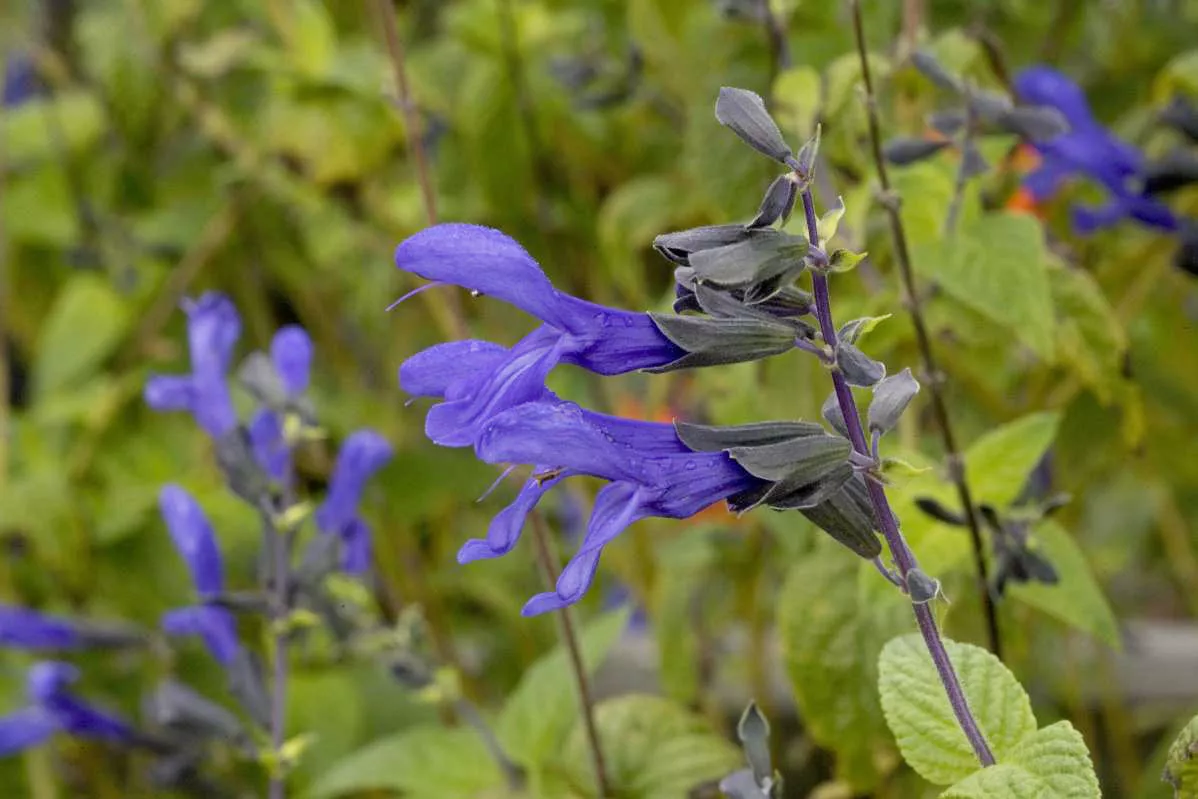
- Botanical Name: Salvia officinalis
- Sun Exposure: Full
- Soil Type: Well-drained
- Soil pH: Slightly acidic
This deer-resistant family of flowers is considered one of the best for attracting birds and butterflies. Plant ‘Black and Blue’ salvia in the middle of the garden or at the back of a border in full sun, where it will grow to 3 or 4 feet tall. Or plant the shorter red salvia in the flower bed or in a pot. ‘Black and Blue’ is hardy in USDA Zones 7 to 10, while red salvia is grown as an annual in areas cooler than Zone 9.
Trumpet Creeper
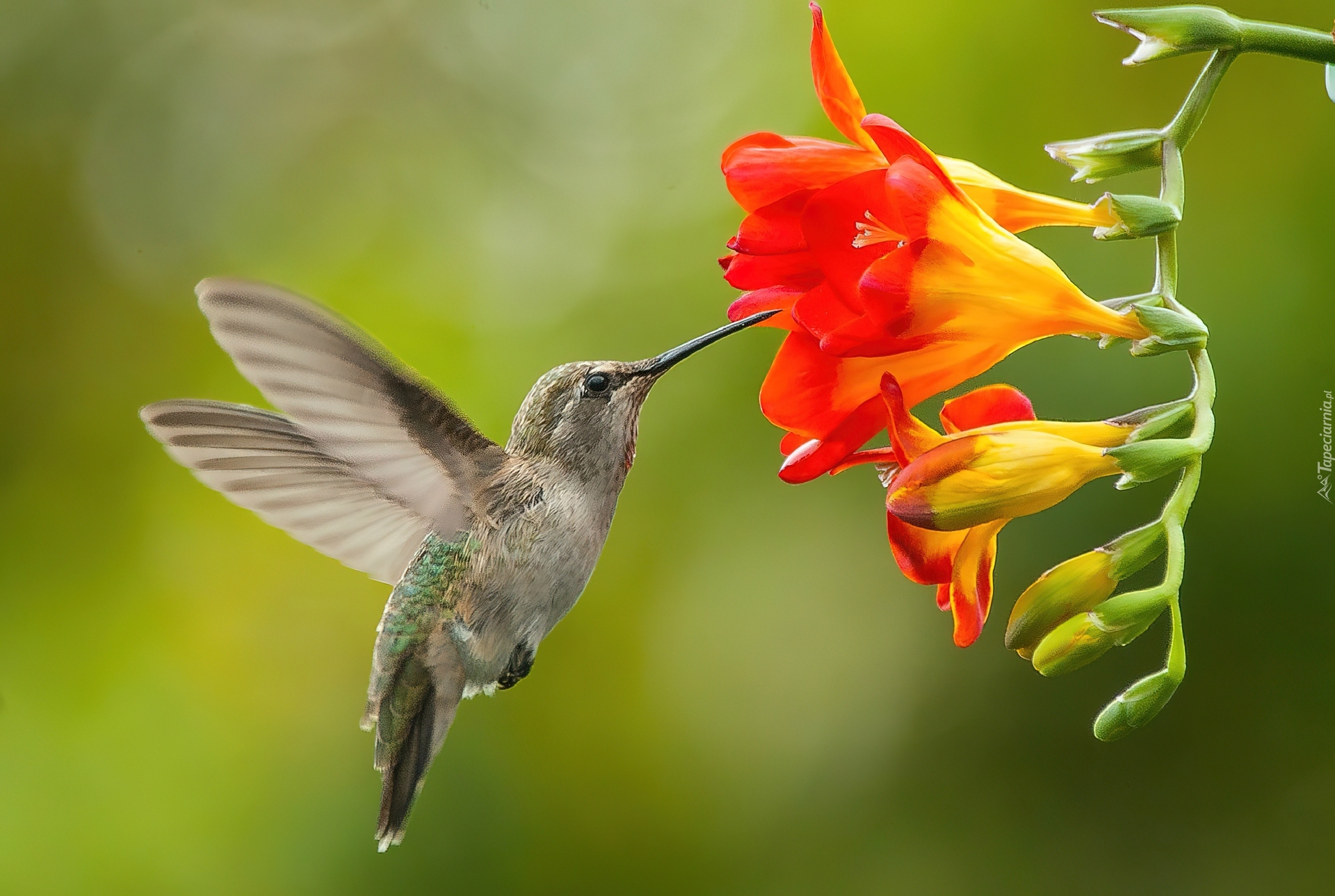
- Botanical Name: Campsis radicans
- Sun Exposure: Full
- Soil Type: Sandy, loamy, clay
- Soil pH: Acidic to neutral
Flowers on this fast-growing native vine are large and also carry a heavy nectar load, which will meet the carbohydrate needs of hummers. You can let it grow wild in natural areas or keep it pruned on arbors and fences. Trumpet creeper can grow to 35 feet and blooms best in full sun.
Cardinal Flower
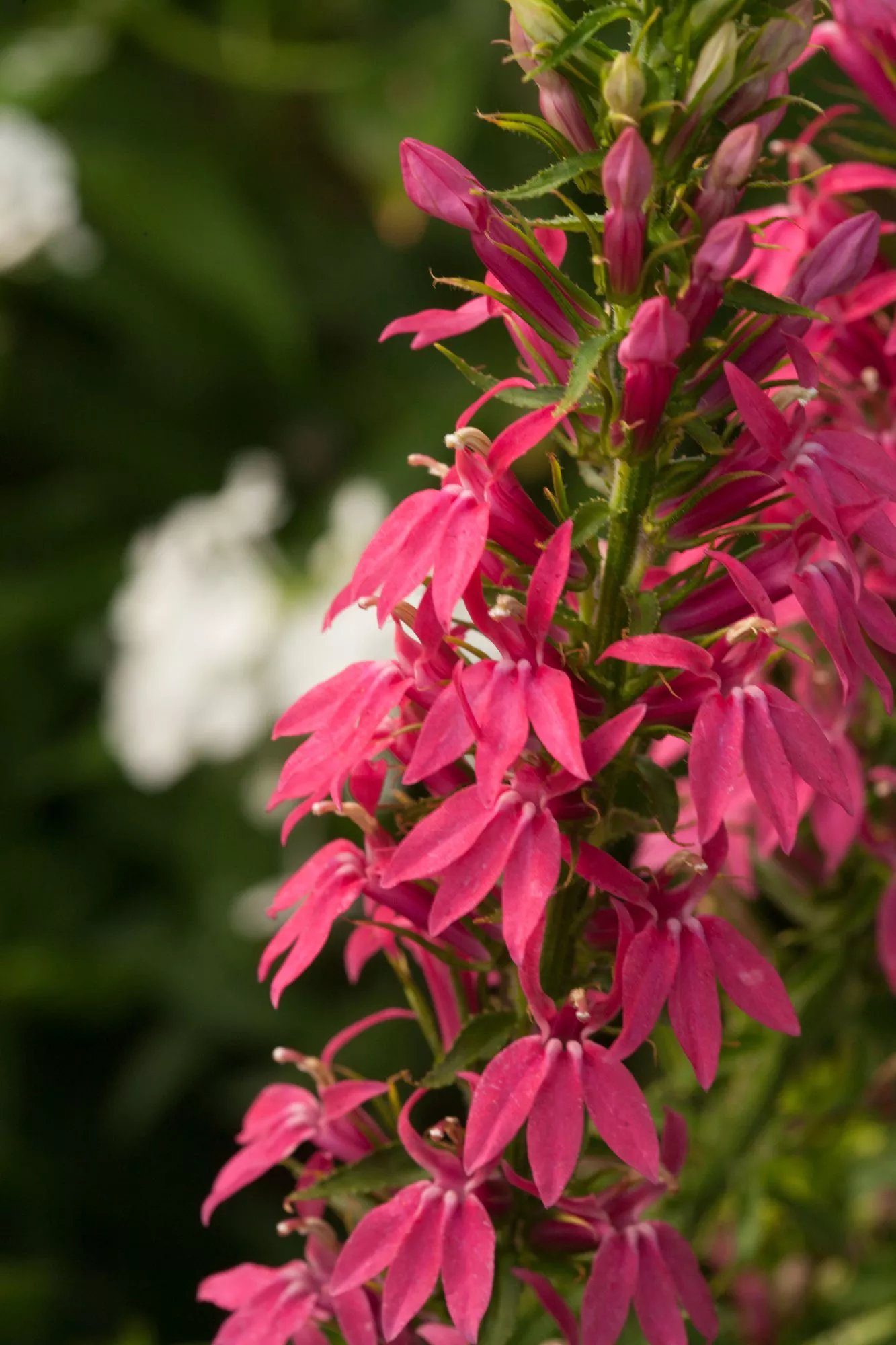
- Botanical Name: Lobelia cardinalis
- Sun Exposure: Full, partial
- Soil Type: Moist, well-drained
- Soil pH: Acidic to neutral
This self-sowing, native perennial thrives in moist soil and prefers full or partial sun. It offers an excellent source of nectar for hummingbirds from late spring through fall—in fact, the plant is dependent on them for pollination. Wild cardinal flower (Lobelia cardinalis) can grow 4 or 5 feet tall, while more compact cultivars like ‘Queen Victoria’ top out at 3 feet.
Lantana
- Botanical Name: Lantana camara
- Sun Exposure: Full
- Soil Type: Well-drained
- Soil pH: Slightly acidic
Depending on its location, this heat-tolerant, sun-loving shrub can be grown as a perennial or an annual. Plant it in the ground or in a hanging basket—hummingbirds are good enough hunters to track down the nectar anywhere. Some varieties grow into large shrubs, while others are more suitable for the front of the flower bed. Generally hardy in USDA Zones 7 and above.
Petunia
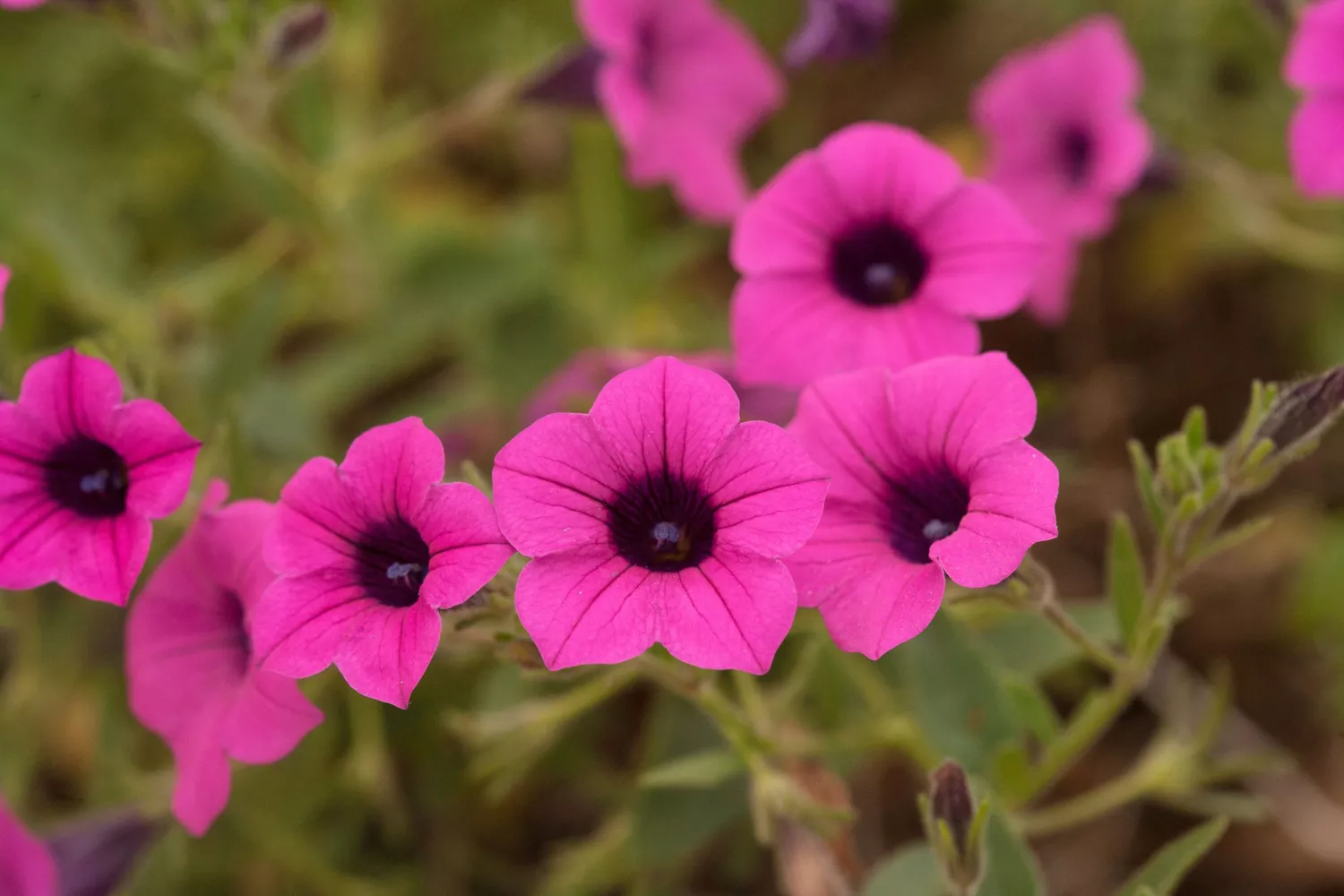
- Botanical Name: Petunia spp.
- Sun Exposure: Full
- Soil Type: Moist, well-drained
- Soil pH: Acidic
Hummers migrate at treetop height, where they can easily spot any vibrant blooms below. Grab their attention with a large grouping of pots filled with this vivid, inexpensive annual. Plant them in full sun and deadhead regularly, and your petunias will bloom from late spring until fall.
Butterfly Bush
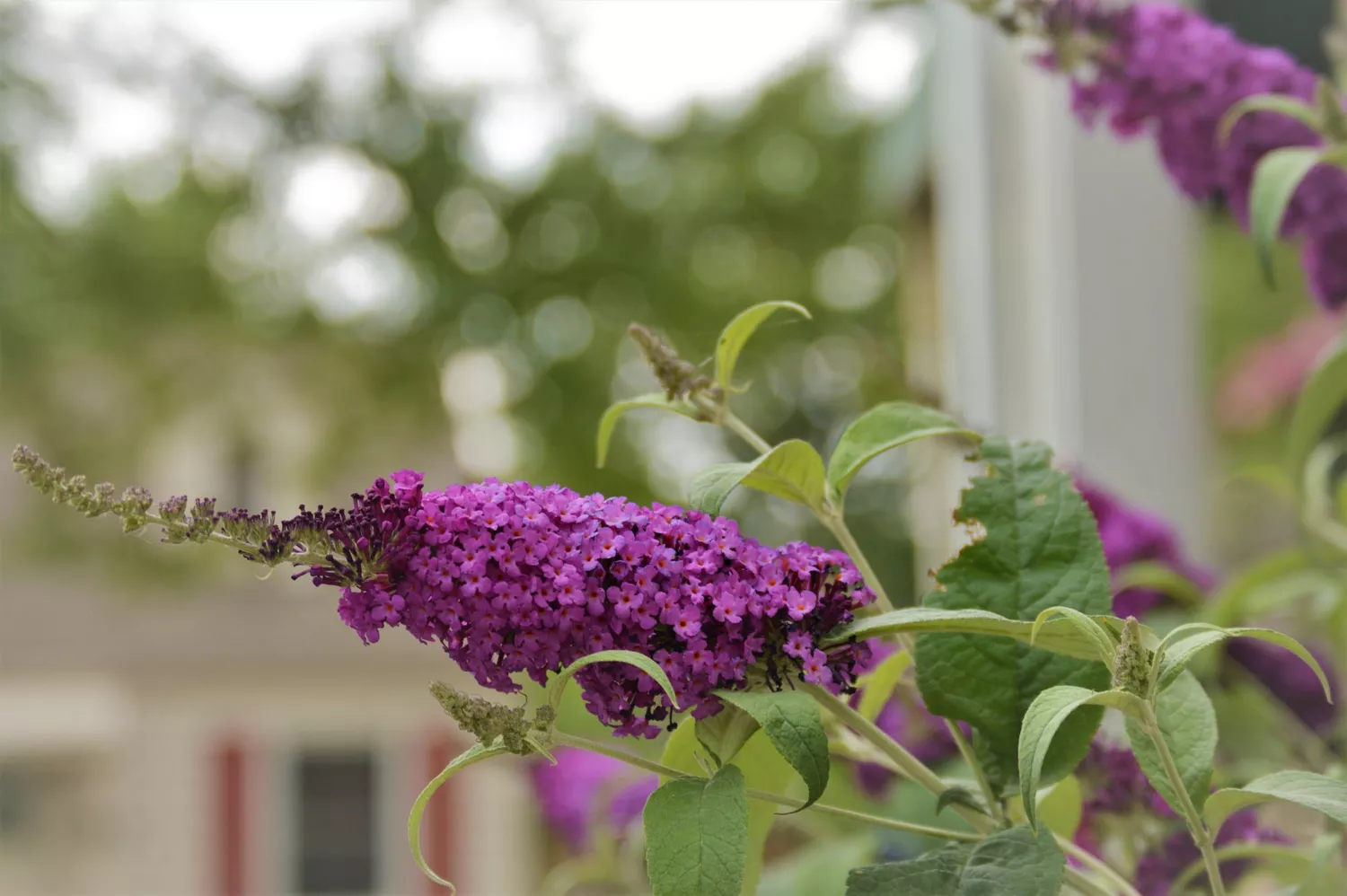
- Botanical Name: Buddleja davidii
- Sun Exposure: Full
- Soil Type: Moist, well-drained
- Soil pH: Acidic to neutral
The cone-shaped clusters of brightly colored blossoms on this sun-loving, drought-tolerant shrub are what first attract hummingbirds, and the high nectar content will keep them coming back for more through summer and fall. Hardy in USDA Zones 5 to 9, but the butterfly bush is considered invasive in some states.
Columbine
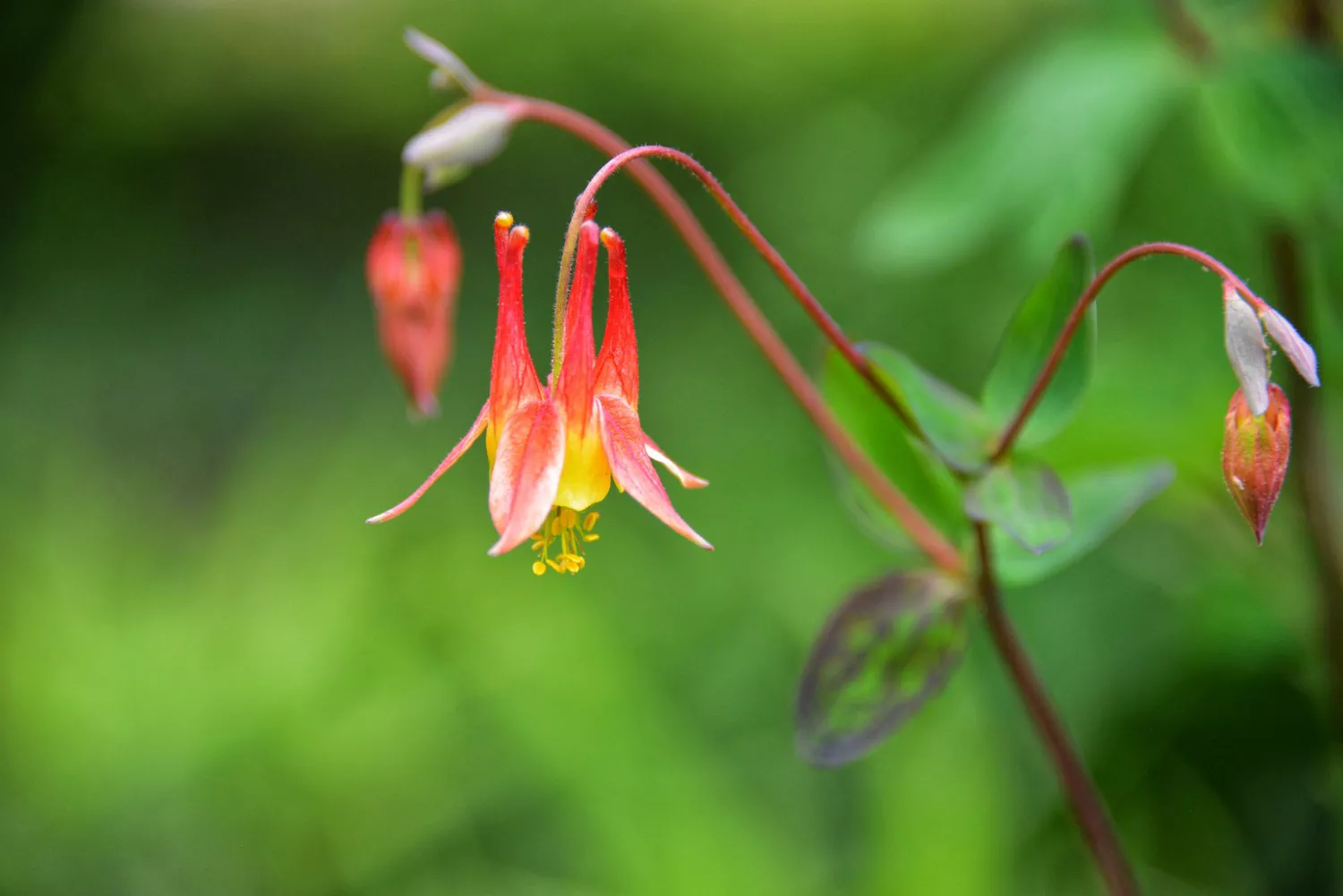
- Botanical Name: Aquilegia
- Sun Exposure: Full, partial
- Soil Type: Well-drained, loamy
- Soil pH: Acidic to neutral
Columbine (Aquilegia) is one of the earliest bloomers on our list, providing an important food source for hummingbirds that arrive in spring. Columbine’s delicate, nodding flowers bloom best in part shade in the South. Once the flowers fade, this perennial serves as an attractive groundcover.
Azaleas
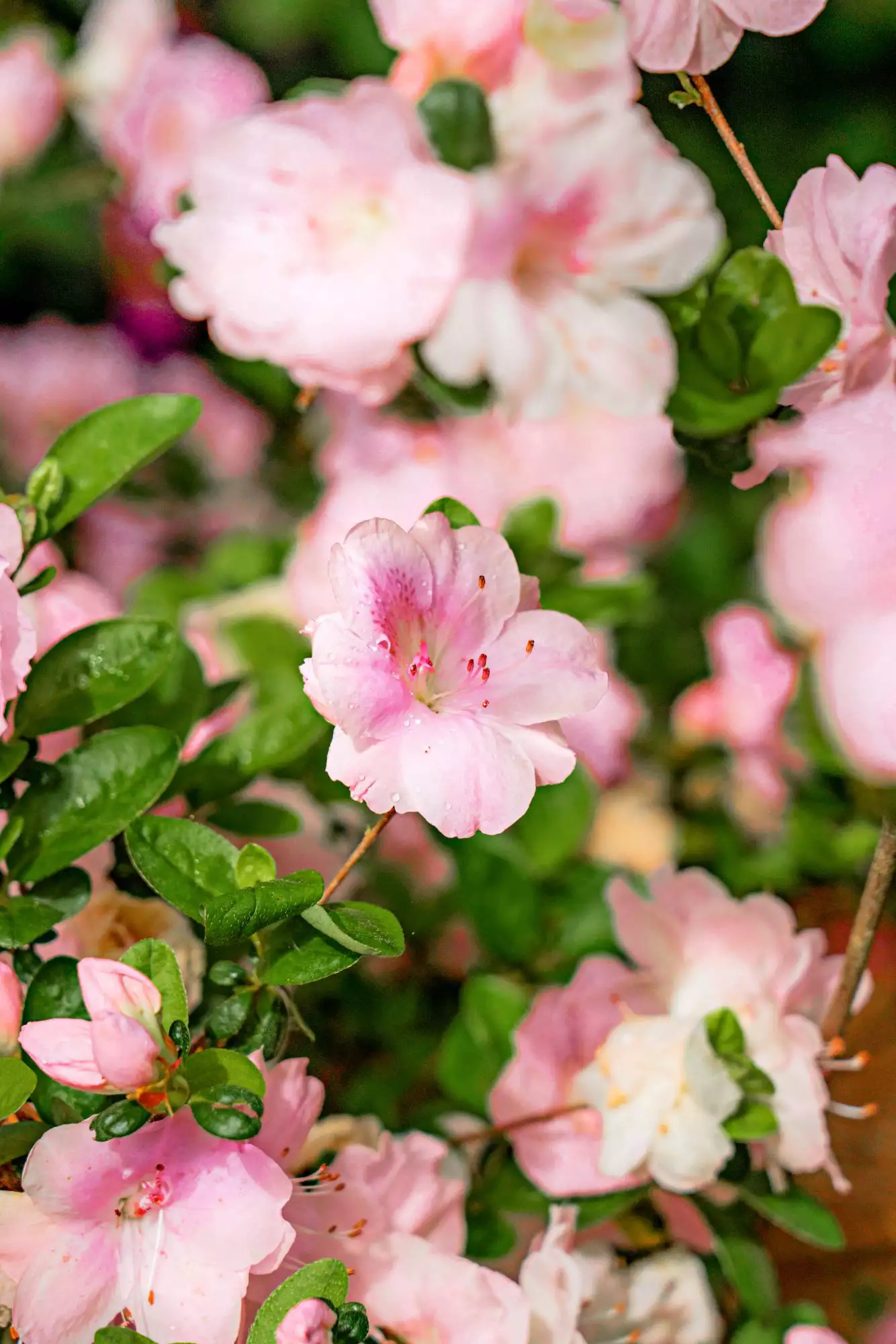
- Botanical Name: Rhododendron spp.
- Sun Exposure: Full, partial
- Soil Type: Moist, well-drained
- Soil pH: Acidic
Bird watchers note that the native, deciduous azaleas that bloom in spring or summer attract hummers, but long-lasting Encore azaleas are also known for enticing birds to stop by for a sip. Plant them in sun or part shade, where they will bloom in spring, summer, and fall.
Bee Balm
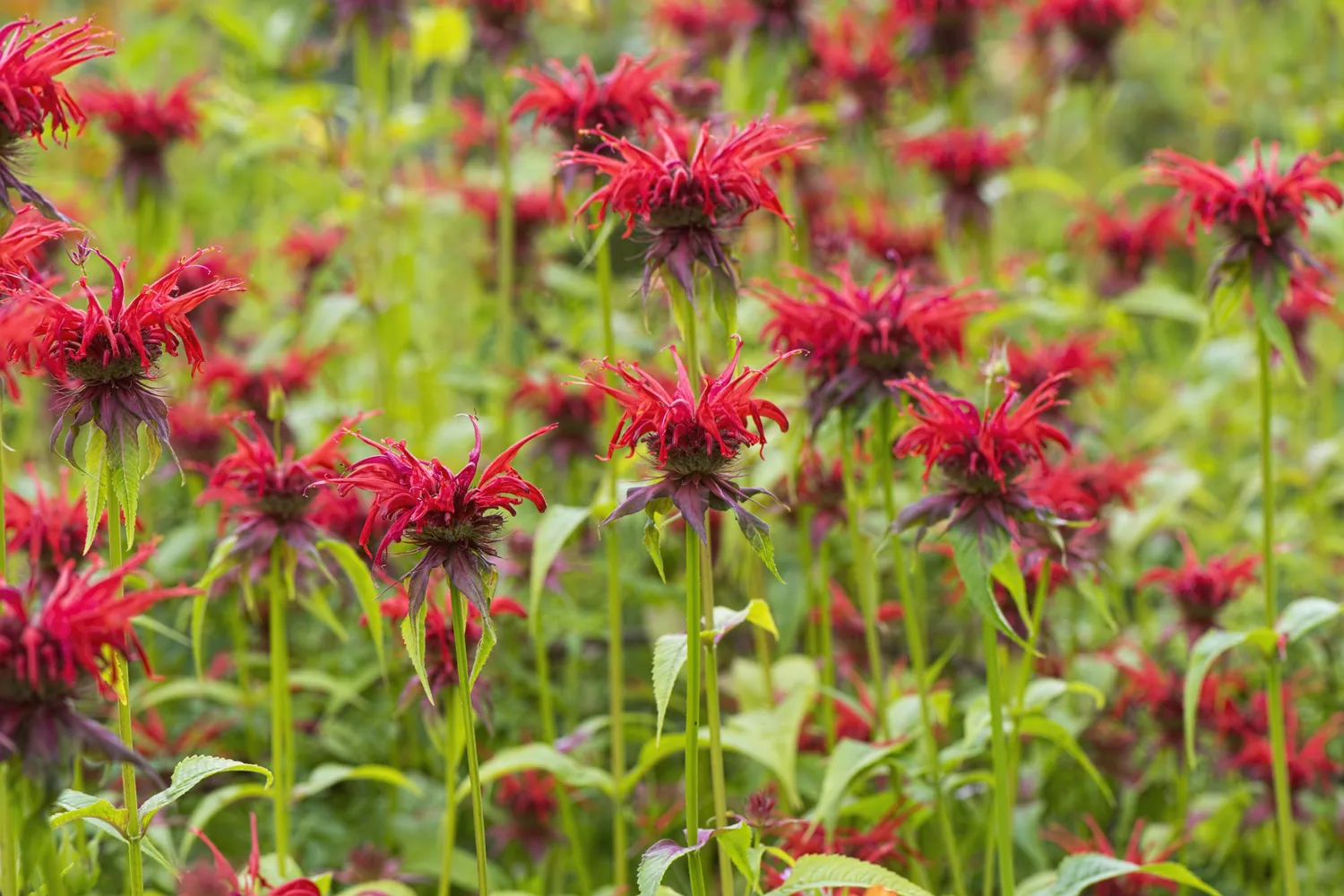
- Botanical Name: Monarda spp.
- Sun Exposure: Full, partial
- Soil Type: Moist, well-drained
- Soil pH: Neutral
Look closely at the flowers of bee balm, and you will notice each petal is a tiny tube perfect for a feeding hummingbird. Plant in a moist, sunny or partly sunny spot, and you’re sure to have a healthy flower patch blooming every summer. Most Monarda plants are hardy in USDA Zones 4 to 9.
Indian Pink
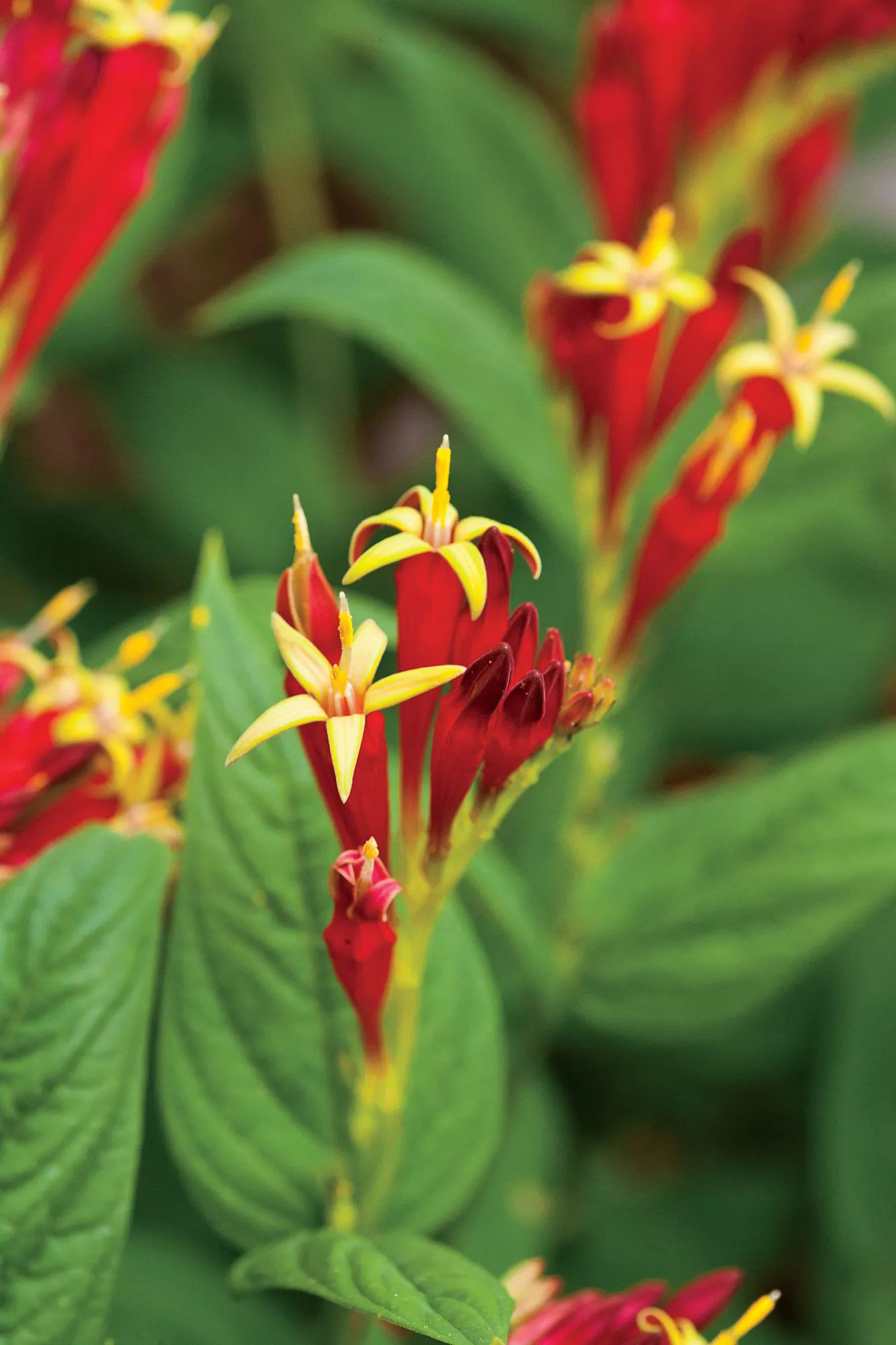
- Botanical Name: Spigelia marilandica
- Sun Exposure: Partial, shade
- Soil Type: Moist, well-drained
- Soil pH: Alkaline, neutral
Indian pink (Spigelia marilandica) is an excellent hummingbird magnet for shadier gardens. The intensely scarlet, tubular flowers of this native perennial open in late spring. Indian pink can be grown in the shade but will stay more compact and sport more blooms if grown in a partly sunny area.
Beardtongue
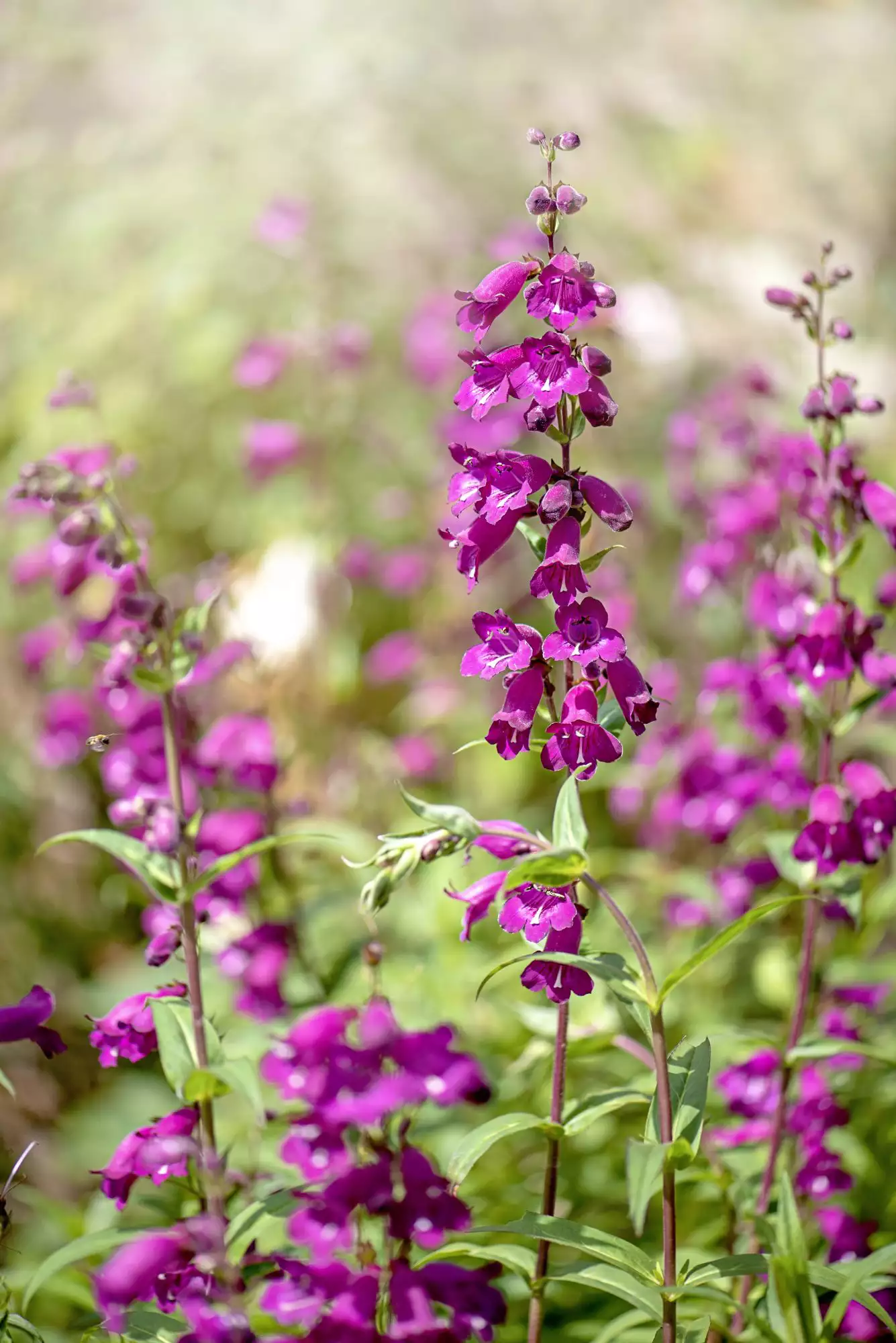
- Botanical Name: Penstemon
- Sun Exposure: Full
- Soil Type: Well-drained
- Soil pH: Neutral to acidic
Penstemon, also known as beardtongue, is sure to attract all kinds of pollinators with showy spikes of bell-shaped purple, pink, or white flowers. Beardtongue shoots up to about 3 feet tall when it blooms in late spring or early summer. Plant in full sun in soil with good drainage.
Phlox
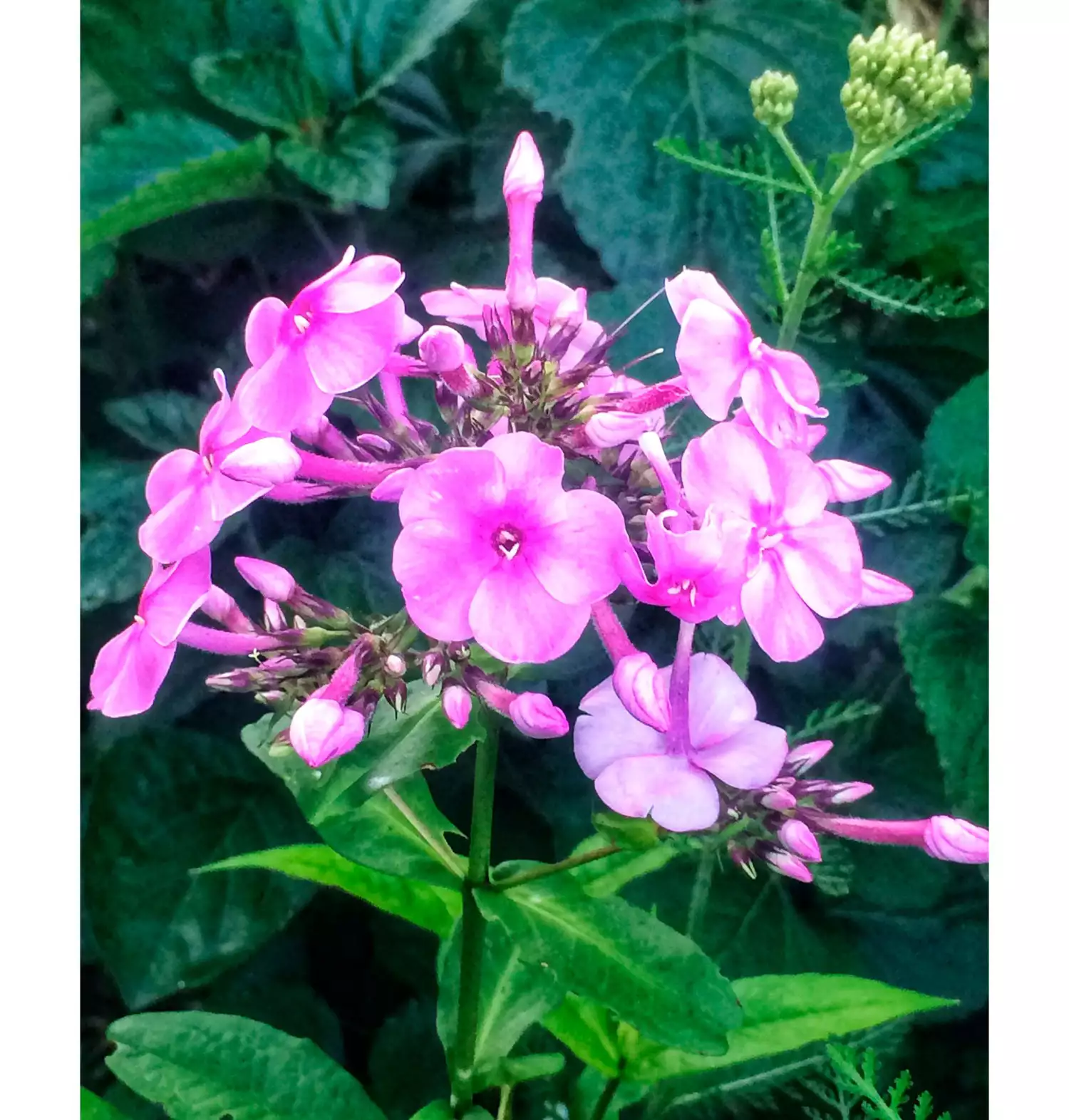
- Botanical Name: Phlox paniculata
- Sun Exposure: Full, partial
- Soil Type: Moist, well-drained
- Soil pH: Slightly acidic
Every garden needs garden phlox, a tall clumping perennial that sports sweet-scented flower heads for weeks in summer. Plant a variety of purples, pinks, and whites to create a multi-colored flower buffet for the birds. Phlox is hardy in USDA Zones 4 to 8 and blooms best in full or part sun.
Pentas
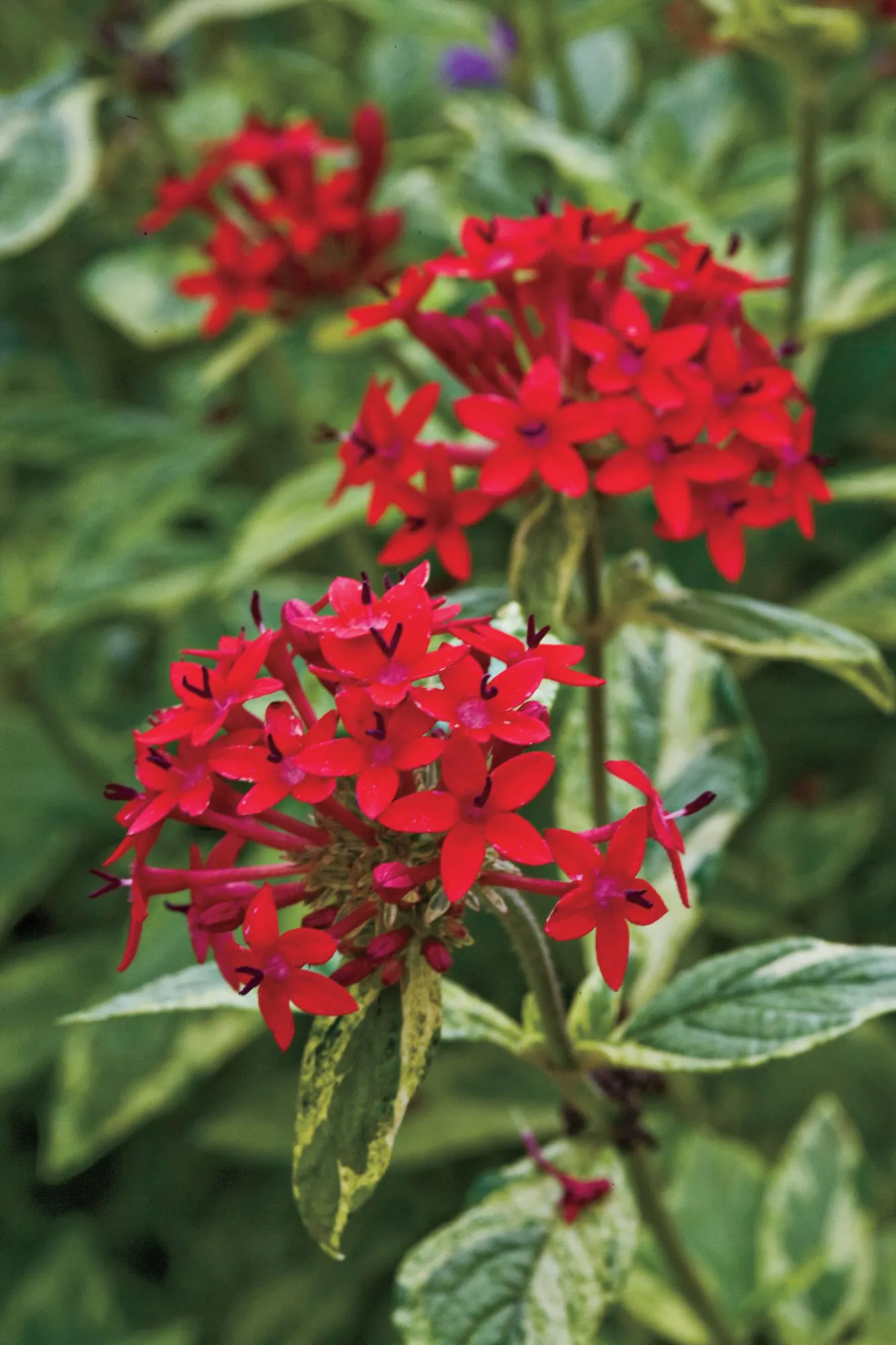
- Botanical Name: Pentas lanceolata
- Sun Exposure: Full, partial
- Soil Type: Well-drained
- Soil pH: Acidic
Pentas is a tender tropical perennial grown as an annual in most climates. The red, purple, or pink blooms thrive when many other annuals melt away in the scorching summer heat. Plant them in full sun and they will bloom all summer long.
Bottlebrush
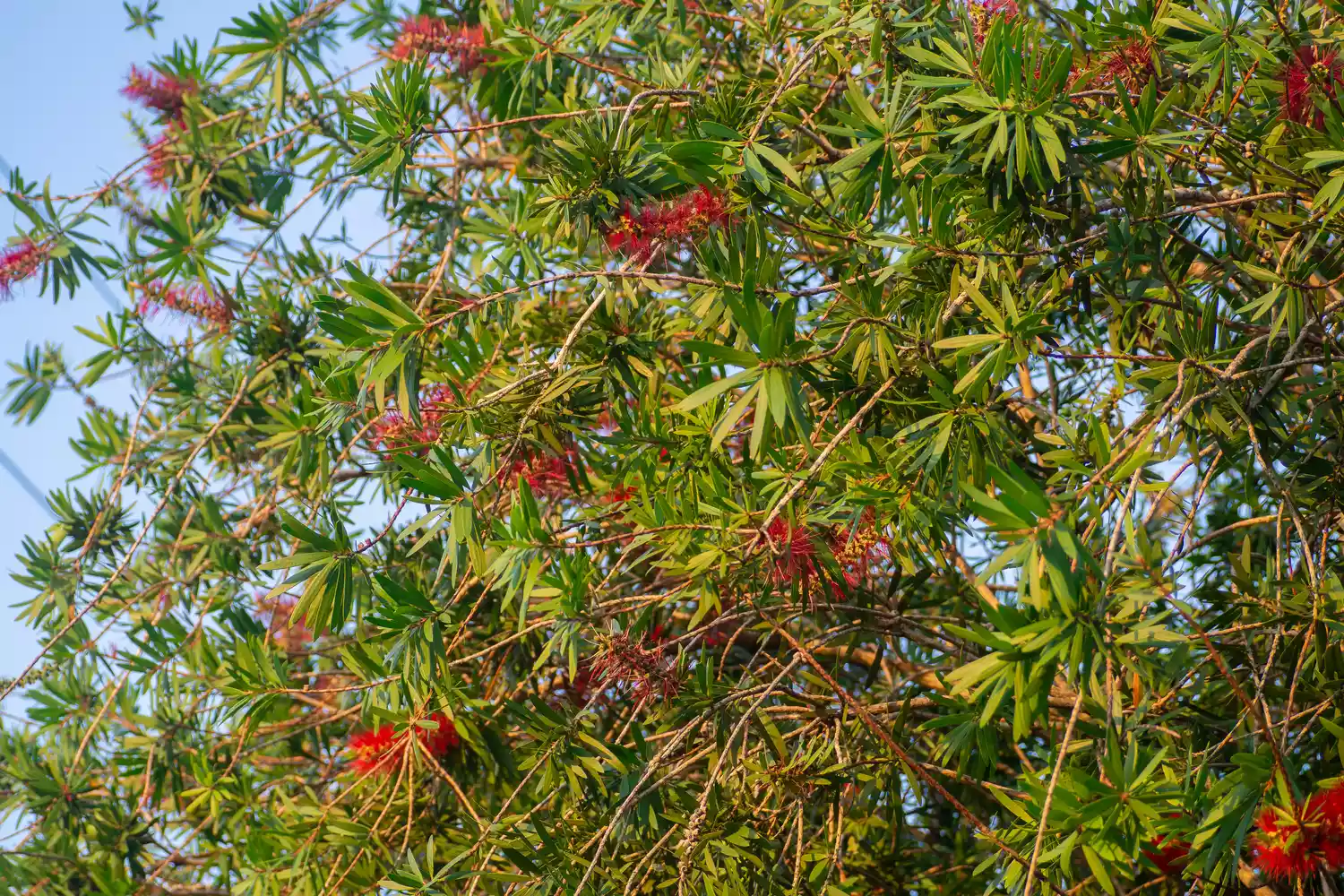
- Botanical Name: Callistemon citrinus
- Sun Exposure: Full
- Soil Type: Well-drained, sandy, clay
- Soil pH: Slightly acidic to slightly alkaline
The colorful bottlebrush plant displays red flowers from spring through summer. The heat-tolerant plant loves full sun in the Coastal and Tropical South, and grows up to three feet wide and four feet tall. Grow compact varieties as hedges, and prune larger, more open varieties into small trees.
Echinacea
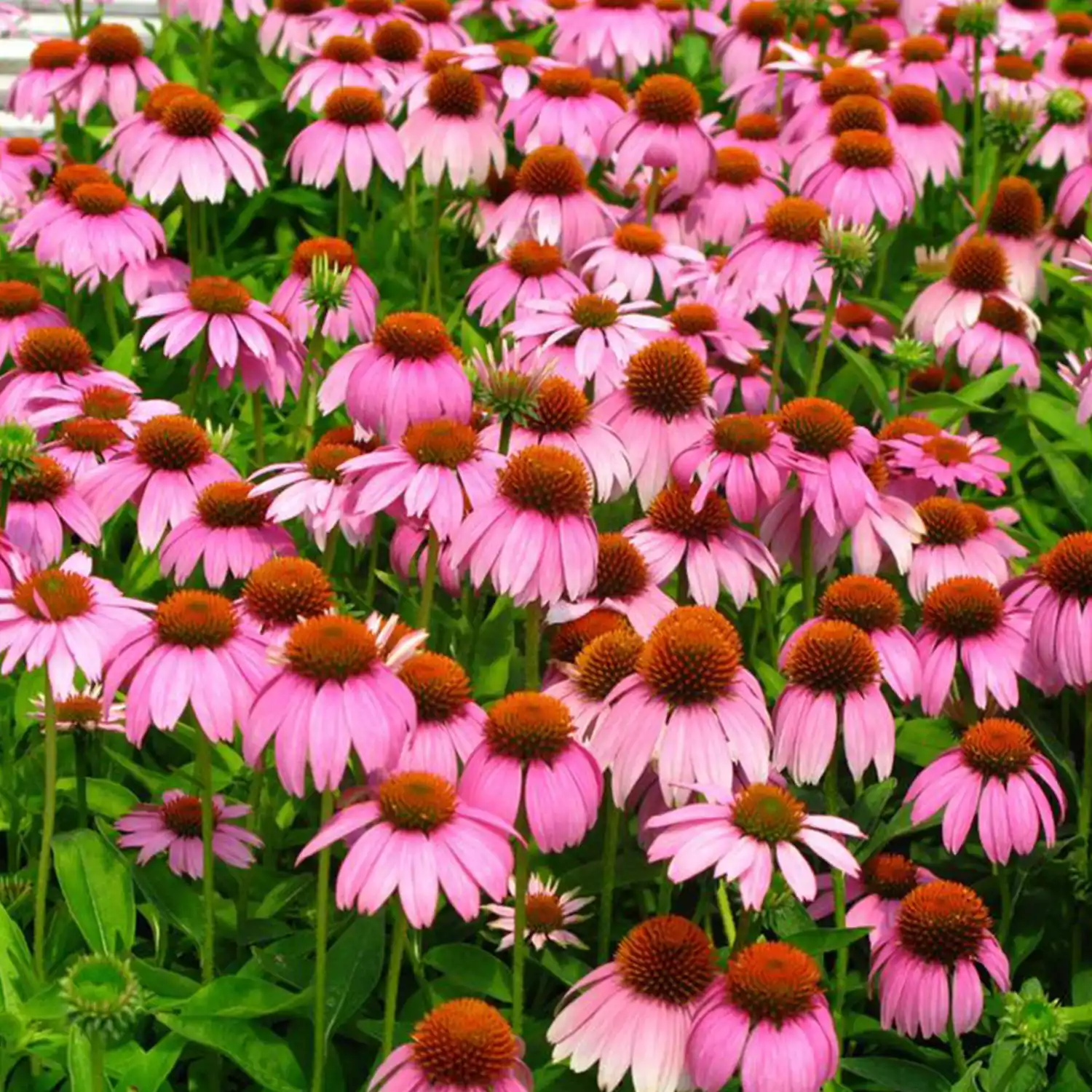
- Botanical Name: Echinacea purpurea
- Sun Exposure: Full
- Soil Type: Well-drained
- Soil pH: Acidic, neutral, alkaline
Commonly known as purple coneflower, this drought-tolerant perennial grows to 2 to 4 feet tall. Grown in borders, flower beds, natural areas, and wildflower gardens, the bright daisy-like flowers lure hummingbirds and other pollinators.
Firebush
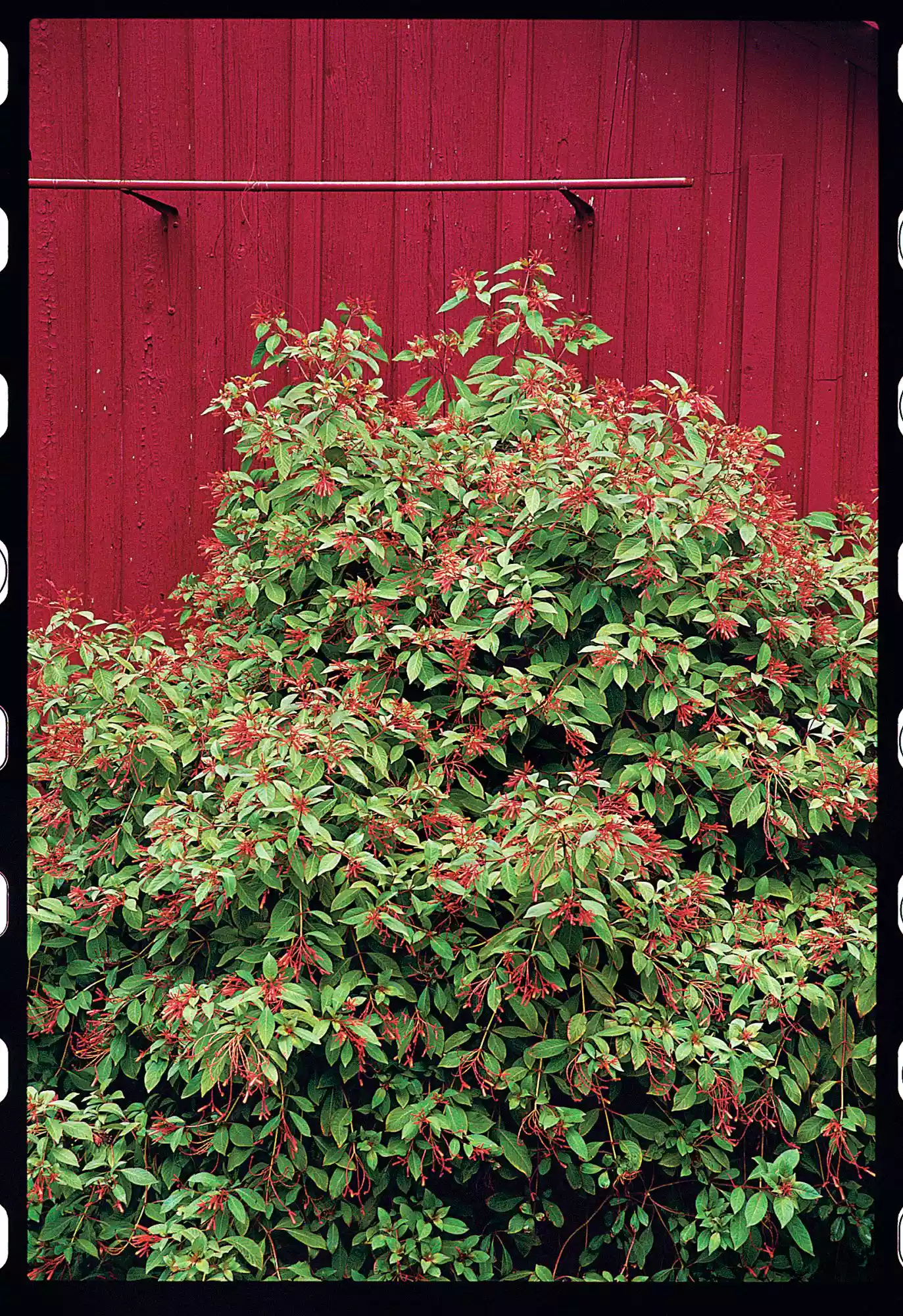
- Botanical Name: Hamelia patens
- Sun Exposure: Full, partial
- Soil Type: Well-drained
- Soil pH: Acidic to neutral, alkaline
Plant these in full sun for maximum blooms, and to maximize hummingbird visits to your garden. Firebush is a fast-flowering, drought-tolerant shrub that’s great for borders and containers in middle and upper regions or as a tall hedge in its native Tropical South, where it can reach 12 feet tall.
Tecoma
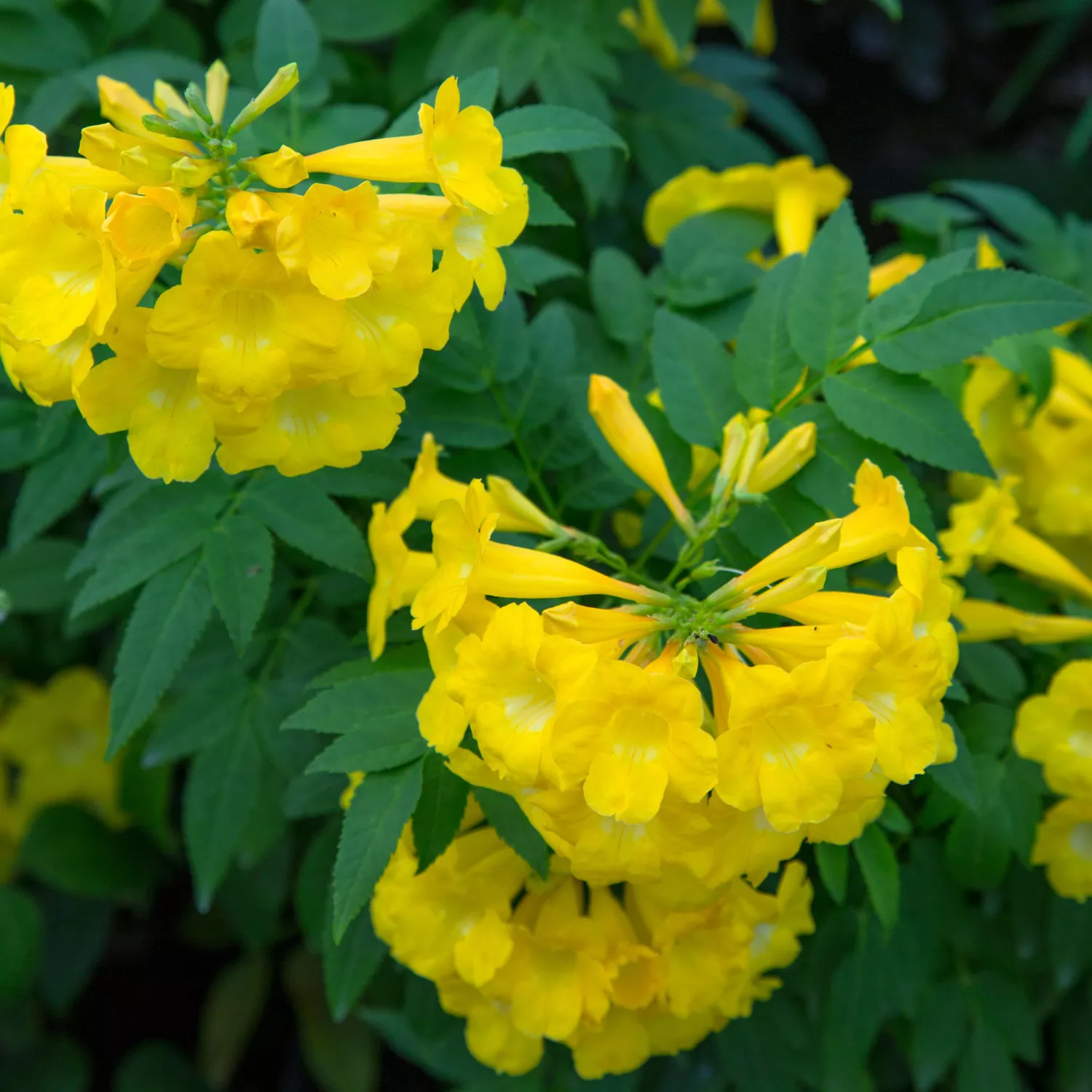
- Botanical Name: Tecoma
- Sun Exposure: Full
- Soil Type: Well-drained, loamy, sandy
- Soil pH: Slightly acidic
These small trees or shrubs belong to the trumpet vine family. Continuously blooming from spring through fall, this shrub attracts hummingbirds to its vibrant flowers, which range from yellow to bright red. Some of the 14 species of Tecoma are compact, making the fast growers a great fit for small spaces.




